Proposed Rebuild Stadium Ignores Years of City Planning

Daniel Miller-Uueda
Community Engagement and Outreach Specialist
“Too often I hear stories about our youth sports teams who have to travel to the suburbs to compete. They don’t have fields that are good enough to play on in their neighborhood, so they are forced to travel to the suburbs to play. Our kids should have the same quality facilities as the teams they compete against and have the opportunity to play in their own community. They deserve a place they are proud of.”
– Mayor Kenney, June 20, 2018
Mayor Kenney’s statement came at an unveiling of plans for the first phase of the Parkside Athletic Fields, a soccer and football field that Councilmember Curtis Jones called a “field of dreams” (Philly Voice, Brian Hickey, 6/20/2018). The field, opened in Spring of 2020, was one of the earliest projects completed as part of the Rebuild Philadelphia initiative, an investment in communities funded by the Philadelphia Beverage Tax. According to the Rebuild Philadelphia website the initiative intends to “make physical improvements to parks, recreation centers, and libraries” prioritizing “high need communities that face high rates of poverty, drug crimes, and health risks” and “sites where the investment could promote community development and stabilization, as well as sites that are in extremely poor condition.”
The Rebuild effort at the Parkside Athletic Fields follows from work in the city dating back to 2012. In fact, the Parkside revitalization was planned before the Rebuild project began as part of a city capital project (Philadelphia Inquirer, 2020). Under Mayor Nutter, two plans for the revitalization of Fairmount Park and the West Park district were developed through the work of over one hundred organizations and civic groups and with the input of thousands of citizens. The Philadelphia City Planning Commission released the West Park District Plan (WPDP) in 2012 and Philadelphia Parks and Recreation, along with the William Penn Foundation and Penn Praxis, released The New Fairmount Park (NFP) proposal in 2014. Language from the WPDP was later echoed in a press conference from Mayor Kenny and resides within the Rebuild mission. It states: “Throughout the nine neighborhoods of West Park it is imperative to improve the standard of living for its citizens through improved commercial centers and public facilities…making active recreation easier and more frequently undertaken are significant goals to improve the health of West Park and its residents” (WPDP, p. 25).
Following exhaustive and inclusive efforts, both the WPDP and NFP recommended the construction of additional recreational facilities near Parkside Ave and Sweetbriar Mansion in order to best serve the communities of West Park. However, according to Rebuild executive director Kira Strong, these recommendations were eschewed because of the “historic viewshed” near the Ohio House and Sweetbriar Mansion and potential difficulty with obtaining clearance from the State Historic Preservation Office and the Philadelphia Historical Commission. Neither the WPDP nor the NFP, with contributions from Kathryn Ott Lovell from the Fairmount Park Conservancy, the Fairmount Park Historic Preservation Trust and Parkside Historic Preservation Corporation, raised concerns about such a historic viewshed. And according to Josh Cohen, chief-of-staff to Councilmember Jones, lack of safety due to “rival gangs” in the Parkside district required a site farther from the neighborhood. Both the WPDP and NFP made clear the importance of supporting recreation that is accessible to the community -- communities that the Rebuild funds were meant to support.
Contrary to the recommendations of Philadelphia organizations, civic groups, the mayor, and the Rebuild mission, Rebuild has selected Edgely Field, located near the intersection of Belmont Avenue and Monument Road, for the site of the second phase of the Parkside Athletic Fields. The proposed turf football and soccer stadium and track would replace 4 acres of grass fields currently used by athletic groups. The grass fields, maintained by the Philadelphia Area Disc Alliance (PADA) and Prior Cricket Club for 36 years, receive more than 100,000 unique visits per year by countless athletes of all ages and from diverse backgrounds.
PADA stands in full support of the Rebuld’s stated mission. PADA operates a high school league and a youth outreach program that serves hundreds of students from the Philadelphia region. Access to quality fields is a major problem for youth athletics in the city. Therefore, we understand the need to rush to action. As Councilmember Jones stated in a Feb. 20, 2020, Philadelphia Inquirer article, “Rebuild is ‘racing against a clock’… We clearly need to be in a position to accelerate the pace.” However, as Councilmember Bobby Henon, a member of the Rebuild Oversight Board, stated in the same article, “The pace of Rebuild is to ensure that our public dollars are spent wisely…You have that community engagement part of Rebuild that I think is essential.”
To ensure that public dollars are spent wisely, this article will outline recommendations in the WPDP and NFP. PADA intends for this outline to serve as a reference for individuals and organizations now tasked with identifying the most appropriate location for the second phase of the Parkside-Evans athletic campus in Fairmount Park.
Theme 1. The West Park District is in dire need of access to high quality playgrounds and recreation centers
“Mayor Kenney has made equity a top priority for selecting Rebuild sites. Most sites are expected to be in high-need communities that face high rates of poverty, drug crimes, and health risks.” – City of Philadelphia Rebuild website, 2021
Rebuild’s mission is to promote equity through the improvement of community facilities in high-need communities. The West Park district is a primary target for Rebuild’s work because of the district’s high poverty rates (much of the district ranges from 30%-40% living in poverty as of 2019) and high crime rate (Philadelphia District Attorney's Office). The West Park District Plan (WPDP) therefore called for improvement and greater access to recreation facilities in West Park “to improve the health of West Park and its residents” (p. 25).
The WPDP’s 2012 survey of the recreation centers and playgrounds in the district found that existing playgrounds and rec centers are “in very poor condition” (p. 28), including detailing problems at the Clayborn-Lewis recreation center, Rose playground, West Mill Creek playground #2, and Ford Road playground. They also found that these municipal facilities are “difficult for residents to access” (p. 28). The West Mill Creek #2 playground provides an example of both conditions. The equipment was found to be broken or severely worn and the facility serves an area of 15.3 square miles. Their survey also showed that high percentages of households (>50% in West Parkside) had no vehicular access.
As a guiding principle, the WPDP states: “The location and condition of community-serving facilities, such as recreation centers and libraries, significantly affect quality of life based on their proximity to the people they serve, their condition, and their accessibility” (p. 28). Therefore, after conducting extensive research and community outreach, the WPDP suggested reorganizing and improving public assets in the West Park community. This included the replacement of the Clayborn-Lewis recreation facility with a new facility at 41st and Poplar St. and converting run down facilities at West Mill Creek #2 playground to passive recreation space. However, the WPDP also provided a revitalization plan for the Centennial District including the creation of recreation fields between South Concourse Drive and the Avenue of the Republic, creating neighborhood amenities between South Concourse Drive and Parkside Avenue, and greening multiple streets between 41st and 52nd streets. These new facilities in the Centennial District would provide high quality and high accessibility to the communities that most need it.
As Mayor Kenney stated upon the launch of the Parkside Evans project: “Our kids should have the same quality facilities as the teams they compete against and have the opportunity to play in their own community.” West Fairmount Park communities, and specifically those bordering the Centennial District to the south, are in dire need of access to high quality playgrounds and recreation centers. As the WPDP recommended and if we make equity a top priority, these facilities should be easily accessible to that community.
Theme 2. The city wants Fairmount Park to be more accessible especially to the neighborhoods bordering Parkside Avenue
“Rebuild is our chance to give every young person in this City a neighborhood public space they can feel proud of.” – Mayor Kenney, October 2019
Another revitalization plan focusing on the West Park neighborhood was the New Fairmount Park (NFP) proposal. The NFP was developed with the assistance of over 100 Philadelphia organizations and the input of hundreds of citizens through public meetings and surveys. The NFP provided extensive plans for the redevelopment of Fairmount Park with the goals of providing “park-wide public access, preserving natural resources meeting community needs for recreation and strengthening park management and stewardship” (p. 4).
Through their community engagement, the NFP project found five principles summarizing community feedback, two of which are pertinent to this report. First, they heard that Philadelphians wanted to “Improve accessibility to and through the park … from the neighborhoods to the park…Improve the physical connections beyond the park edges and its adjacent streets” (p. 93). Second, they heard that the community wanted to “create ways to introduce youth to the park through recreation, education, and employment…Think of the park edges as extensions of the adjacent communities, and plan activities to build stewardship” (p. 93). The grand proposal put forth in this project envisioned a Fairmount Park that served its communities, especially its adjacent communities, by drawing them in with activities that served their interests.
In response to these community needs, the NFP, among many other extensive recommendations, outlined a plan that would better connect the Parkside community to Fairmount Park. These recommendations included de-paving 41st St. and South Concourse Drive, adding community spaces along Parkside Avenue, and redesigning the roundabout on Lansdowne Drive to better serve as a pedestrian gateway to the park.
Additionally, the NFP included a plan to develop a “Parkside Edge” project: a “play space between Kelly Pool and the School of the Future to provide new recreation opportunities for nearby youth of all ages” (p. 83). Echoing the WPDP, such a recreation area in the Centennial District fulfills various community needs including accessibility, proximal connection to neighborhoods, would draw youth into the park through recreation, and would build stewardship.
The NFP demonstrated that the City of Philadelphia wants Fairmount Park to be more accessible, especially neighborhoods bordering its edges. The space proposed between Kelly Pool and the School of the Future provides this accessibility.
Theme 3. The Rebuild mission is not served by a stadium at Edgely Field
“Rebuild will also prioritize sites where the investment could promote community development and stabilization, as well as sites that are in extremely poor condition.”
– City of Philadelphia Rebuild website, 2021
The selection of Edgely Field for a new stadium is an affront to the countless hours spent by the WPDP, NFP and other organizations going back 10 years to plan for providing accessible recreation opportunities to the West Park community who need and deserve high quality amenities in their neighborhood. The evaluation criteria used by the Rebuild committee was artificially narrow and eliminated serious consideration of other properties prematurely. Instead of putting the needs of the community first, sites were evaluated based on ease of construction and obtaining permits. While Rebuild’s website states that community feedback is a vital aspect of each project, Rebuild has publicly shared that the assessment for finding a site is limited to topography, landscape, hydrology, utility, and historical site status (Edgely Stakeholder Session). Through focusing on this criteria alone, Rebuild fails to take into consideration community needs and opinions, which have already been gathered through the efforts of WPDP and NFP, as well as current permitting and usage rates of the sites in question (more on this below). When millions of dollars are expected to be spent for project design and construction, the effort to mitigate constraints such as topography and utilities is a small fraction of the total. Certainly, community investment, revitalization, and accessibility should come first in the selection criteria of any Rebuild site.
Building a stadium at Edgely field also goes against several other goals outlined by Rebuild. For one, building a stadium at Edgely field reduces the currently needed functional field space in Fairmount Park. Field space at Edgely would be reduced from seven fields, two which share space with a cricket field, to four fields, one which is turf and two of which are shared with a cricket field.
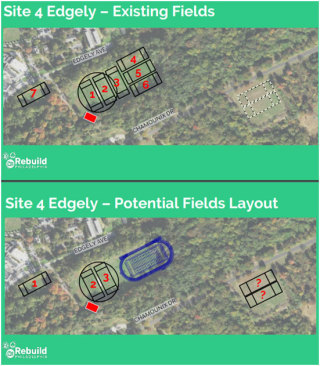
Rebuild aims to prioritize sites that are in “extremely poor condition,” yet Edgely field is in excellent and functioning condition and in fact is one of the most heavily used athletic spaces in the city, with some 200 athletes playing there every weeknight of the summer. Credit to Edgely’s current conditions is given to PADA and Prior Cricket Club for the organization’s stewardship of the fields through several decades of direct funds to field maintenance, dedicated staff, and volunteer hours. The fields at Edgely have little in common with the description of sites that Rebuild says it aims to target and the construction of a stadium on Edgely would waste resources needed for the improvement of other sites truly in poor condition.
An important goal of Rebuild is to foster community development. WPDP and NFP both felt that key aspects of projects focusing on community development would include a focus on neighborhood, commerce, and revitalizing existing park space. Beyond the fields themselves, the location of Edgely does not meet this vision. There is a very limited population within a 10 minute walk, and much of that population resides in retirement homes or elder-care facilities. The proposed stadium would not revitalize existing space, given the pristine condition Edgely is in relative to other fields throughout the city, and would actually displace a vibrant and diverse community of current users .
Edgely is not within walking distance of any schools listed by Rebuild as having future access to this stadium, nor adjacent to any neighborhoods described by WPDP/NFP as being in need of revitalization. The Sweetbriar site, by contrast, is within walking distance of several such schools (School of the Future, Discovery Charter School, KIPP Charter School, Global Leadership Academy) and neighborhoods. The Ohio House site is accessible to fewer of these schools and neighborhoods than Sweetbriar but far more accessible than Edgely. If accessibility to the proposed stadium by students and their parents is an important factor in site selection, it makes little sense to choose Edgely.
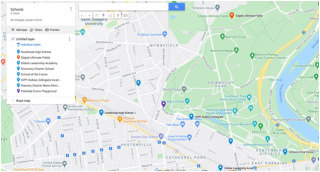
Conclusion
We therefore encourage Rebuild, city council, and civic organizations that supported the work of the WPDP, The New Fairmount Plan, and the Centennial Commons revitalization in 2018 to heed the words of Councilmember Henon and consider a wiser choice for the Parkside-Evans phase 2 stadium site. Following Rebuild’s mission to listen to community input as they expand recreational opportunities for city youth, this site should be near Parkside Avenue along the southern side of the Centennial District. The Edgely field does not fit this criterion and will not adequately serve the needs of the community it intends to serve. We urge Rebuild to uphold the Rebuild Promise to “1. Acknowledge History, 2. Engage Community, and 3. Invest Intentionally.” Rebuild’s actions fail to prioritize serving the community over “historic viewsheds.” We believe City Council will do the wise thing over the expedient thing.
As PADA has stated on multiple occasions, the organization’s preferred outcome is a shared space between PADA and other sports organizations, especially those representing underserved youth populations in the Parkside area. In order to fulfill this vision, PADA has worked in coordination with Philadelphia's Parks and Recreation to ensure that new organized sporting events and existing PADA events can both enjoy Edgely fields. We urge Rebuild to recognize the promising collaboration that has taken place over the summer of 2021, and envision Edgely, one of the best-kept fields in the city, as a shared, grass field, not a site fit for a potential stadium.
Suggested Articles

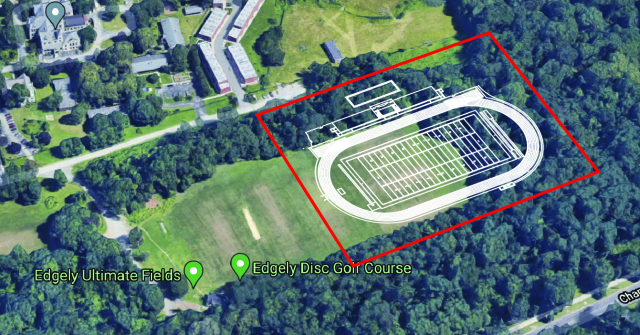
The History of the Centennial District
Preserve Edgely believes in retaining these buildings and statues because they have historic value and there are few of them, but Preserve Edgely does not belie...
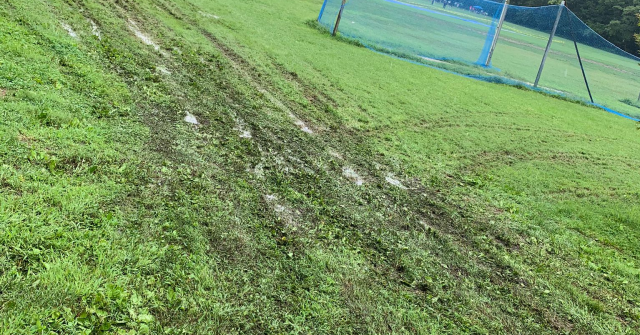
Improper Oversight Damages Fields
Take a look at these photographs showing damage done to the grass when the fields were driven on and played on during a rainstorm this past weekend (August 28th...
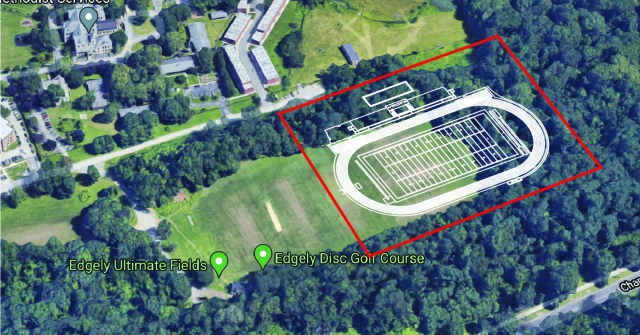
The Plans
Edgely is home base for over 10,000 people across multiple communities. Building in this location would be devastating to the existing communities who use this ...
